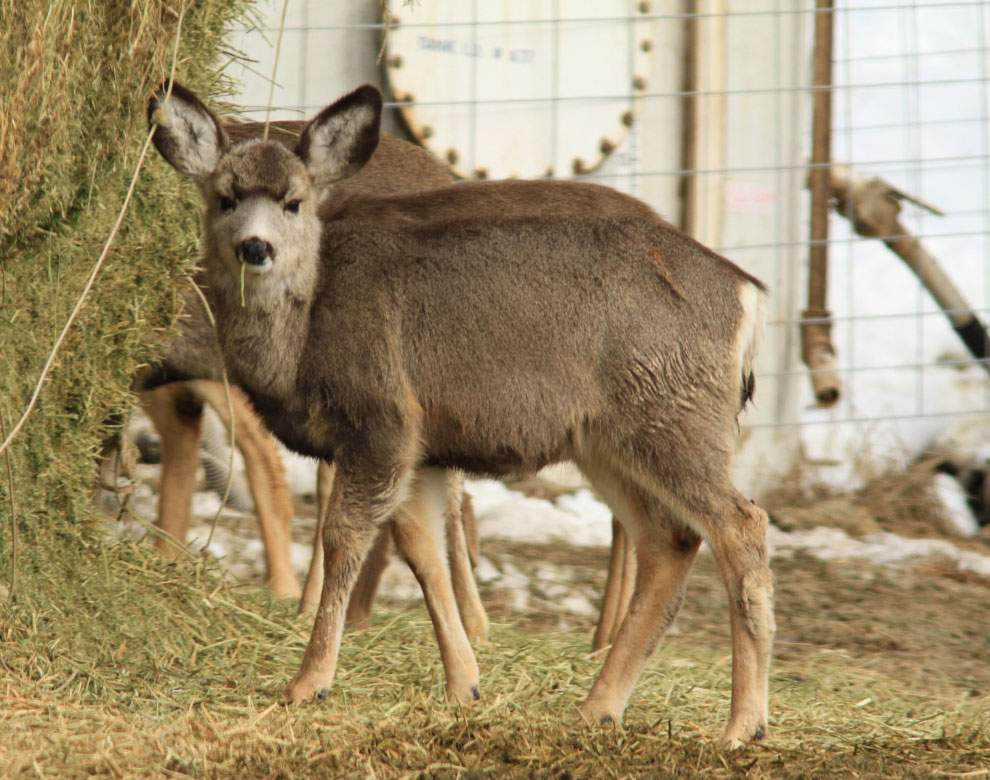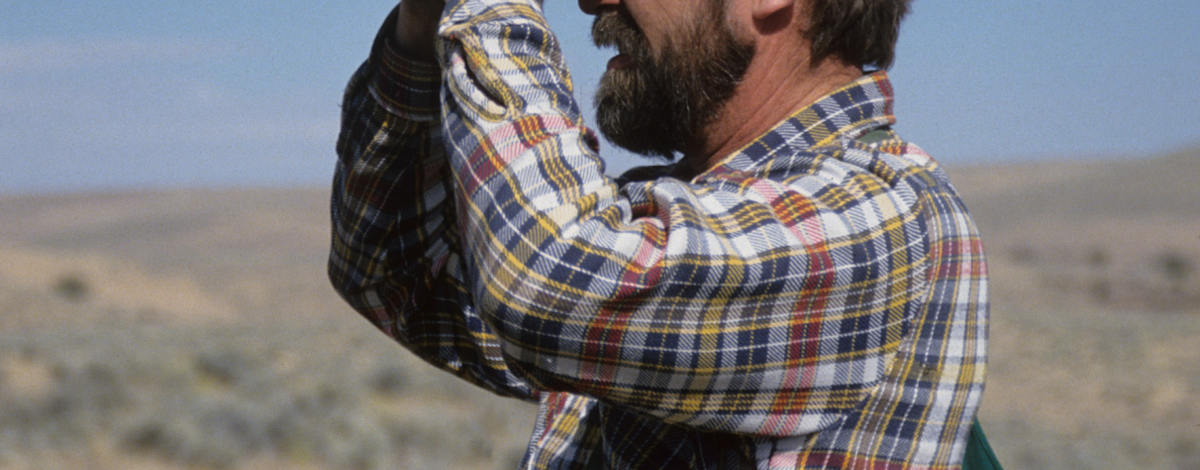Mule deer (Odocoileus hemionus) are the most common large mammal in Idaho. The deer’s scientific name reflects one of the animal’s most recognizable features – its large ears. Hemionus means half-mule.
Mule deer are the largest of the two deer species in Idaho. Bucks average about 250 pounds and develop antlers that grow in a branching pattern. The better the quality of food a buck eats the healthier he will be and the larger his antlers will grow. You cannot tell how old a buck is by the size of his antlers. Does are smaller, averaging about 155 pounds.
Mule deer are found in many different habitats. They like rocky brushy areas, open meadows, pine forests, aspen tree groves and areas next to waterways. Where you may find mule deer depends a lot on the time of year. During the summer and spring, mule deer may be found on mountain slopes where shrubs, flowering plants and grasses grow. Does with fawns may be found around aspen tree groves. Aspen groves have many flowering plants, called forbs. These plants are important for mule deer, especially nursing does, and the trees offer shelter for the fawns. During the winter, deep snow makes it difficult for mule deer to access food. So they move down from higher mountain elevations into lower elevation valleys and south-facing hillsides. Here snow is not as deep and sagebrush and bitterbrush are easier to find. Mule deer may migrate 50 to 75 miles between their summer and winter habitats. The most important habitat for mule deer is the summer habitat. If deer eat well during the summer and are nice and fat when winter comes, they usually can survive severe winters. But if mule deer cannot find high-quality nutritious food in the summer, no matter how good the winter habitat may be, they may succumb to the harshness of winter.
Keep an eye out for mule deer next time you are out in Idaho’s wild places. They are beautiful deer and lots of fun to watch, especially when they are bouncing away from danger. Mule deer can jump over a four-foot fence!


